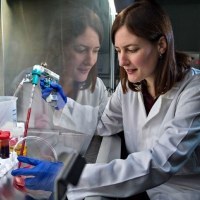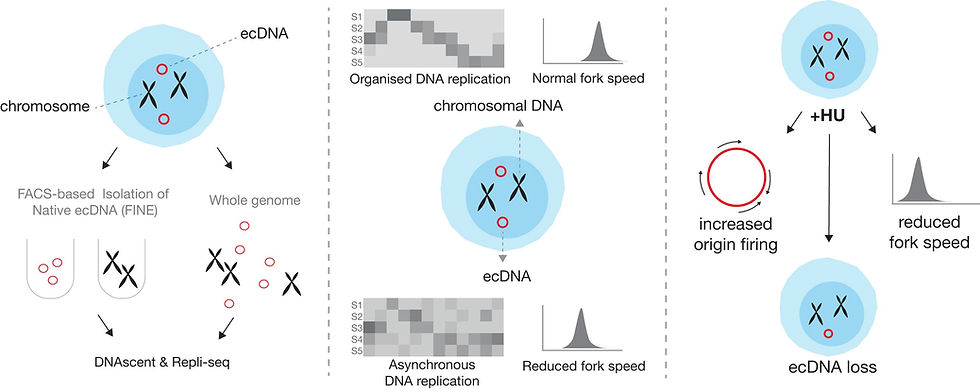A high-throughput, low-cost assay for DNA replication stress
- Admin

- Aug 20
- 2 min read

We have just published a paper entitled "A high-resolution, nanopore-based artificial intelligence assay for DNA replication stress in human cancer cells" which uses DNAscent to measure DNA replication stress in human cancer cells. This was a collaboration with Mathew Jones at the University of Queensland, and it drew from a broad range of expertise across Queensland, Cambridge, and London. It even features work from Catherine Merrick and Francis Totanes in Cambridge Pathology's Microbiology and Parasitology Division who were instrumental in helping us show that the AI model in DNAscent generalises to outlier genomes.
The general slowing and stalling of DNA replication forks, termed "DNA replication stress", is a hallmark of cancer but determining whether a cell is under replication stress is still relatively difficult and expensive. Historically, this was done by the microscopy-based DNA fibre assay, but this technique has a low throughput and it's difficult to do. Here, we showed how the Oxford Nanopore Technologies sequencing platform, together with DNAscent, can be used to create a fast, easy, and cost-effective assay for determining whether cells are under replication stress. We went further by distinguishing which type of replication stress a cell is under, as our method can clearly differentiate between replication forks that move slowly but progressively and replication forks that stall. Since our method is built on DNA sequencing rather than microscopy, it's straightforward to map stressed replication forks to the genome in order to associate them with gene expression, chromatin state, replication timing, and other genomic features.
As ever, we're supporting this method by keeping our DNAscent software open source and freely available. We want to make our tools as easy to use as possible, so we also provide Singularity images for all major DNAscent releases so that users can get straight to the science quickly without having to manage any dependencies. To future-proof the method, we've included releases for both R9.4.1 and R10.4.1 versions of the Oxford Nanopore sequencing chemistries.
This work took place over a long period of time and involved a tremendous effort from some great people. We want to thank the Australian Research Council, the European Research Council, Isaac Newton Trust, Leverhulme Trust, Cancer Research UK, and the UK Medical Sciences Research Council for providing us with the funding and support to build something really cool. The Cambridge Service for Data-Driven Discovery and Queensland Genome Innovation Hub were also instrumental in enabling us to carry out our research.
Team



















